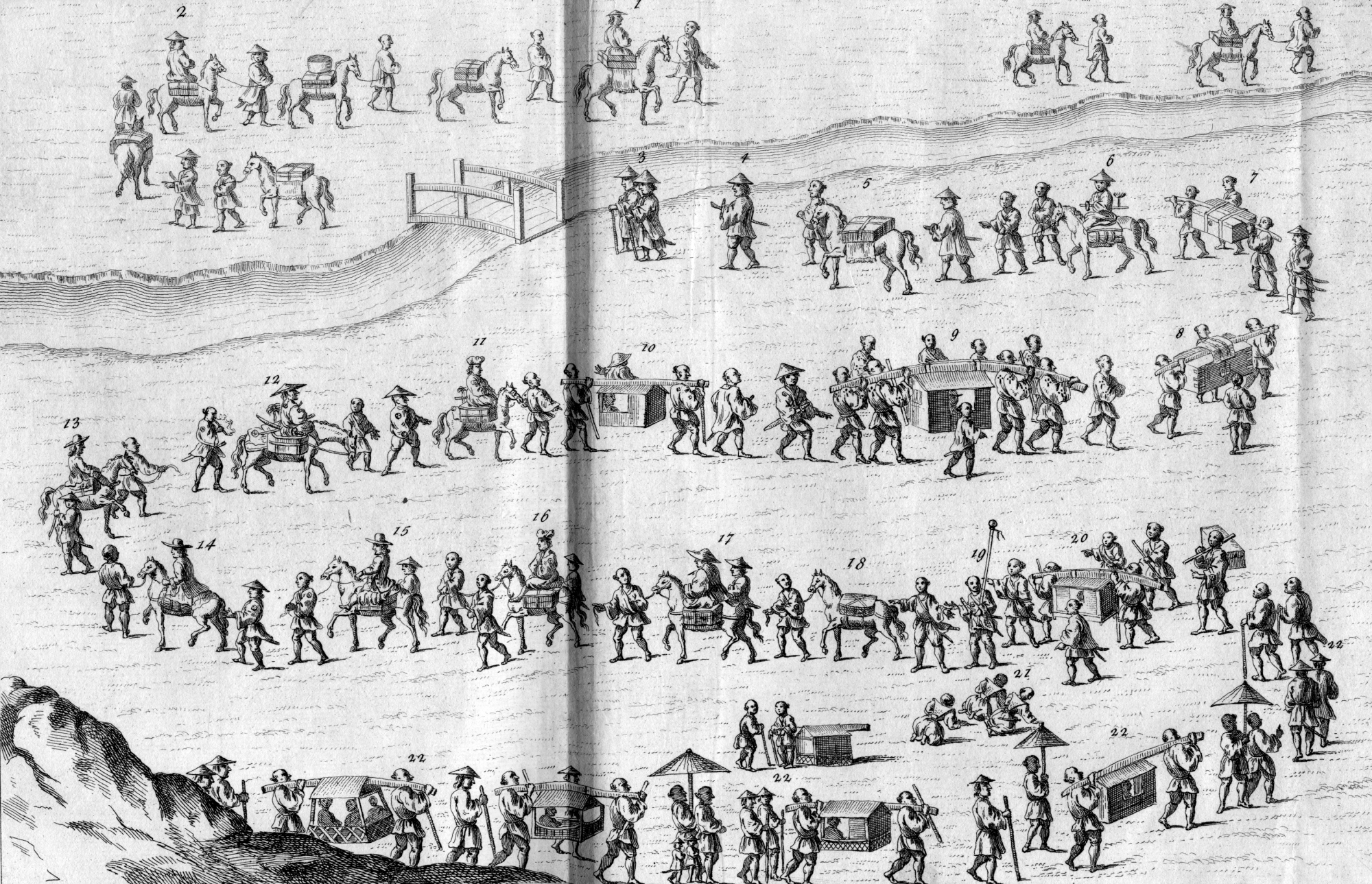You met all kinds of people on the roads of old Japan — throngs of them. "An incredible number of people daily use the highways of Japan's provinces — indeed, at certain times of the year, they are as crowded as the streets of a populous European city," wrote Engelbert Kaempfer (1651-1716).
Physician, scholar, naturalist, explorer, Kaempfer was in Japan from 1690-92. Fifty years earlier Japan had barred its gates against the menacing outside world — an isolation it would maintain until the mid-19th century. The only foreigners admitted were a handful of Dutch and Chinese traders confined to the little island of Dejima off Nagasaki. Kaempfer, attached to the Dutch East India Company as a physician, writhed under the confinement but twice traveled to Edo (present-day Tokyo) as part the annual delegation that the Company was obliged to send for an audience with the shogun. His "History of Japan," published posthumously in 1727, was a bestseller — Europe's first full-length portrait of a remote, mysterious, inaccessible "heathen" land.
"Japanese travel more often than other people," Kaempfer wrote — not overseas, for leaving the country could be a capital crime, but along the storied network of roads known as the Gokaido (Five Highways) linking Edo, the shogun's capital, with the outer provinces and Kyoto, the imperial capital. Construction of these began early in the 17th century, symbolizing and reinforcing a national unity forged in battle and still fragile.


















With your current subscription plan you can comment on stories. However, before writing your first comment, please create a display name in the Profile section of your subscriber account page.